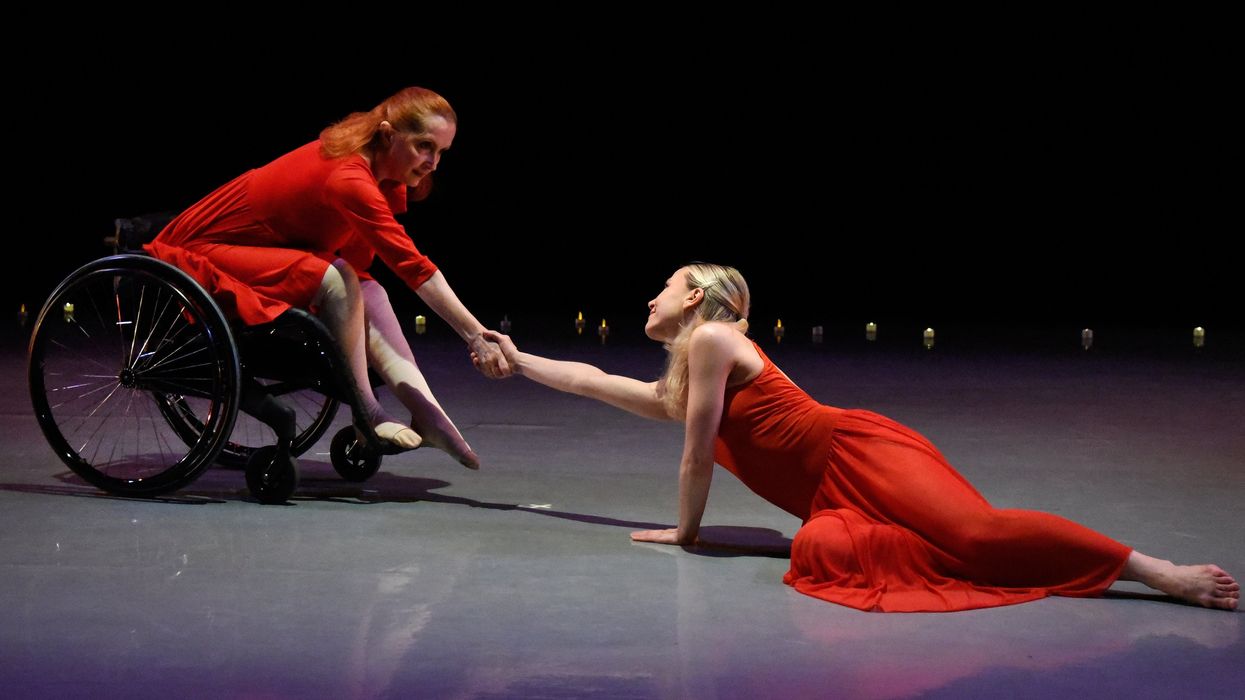Kitty Lunn Wants the Dance World to Know: "Disability Doesn't Limit Talent"
Kitty Lunn once thought her dance career was over. The former Washington Ballet dancer had slipped on an icy staircase, breaking her back and becoming a paraplegic.
Thirty-three years later, not only is Lunn still dancing (she takes ballet and modern at Steps on Broadway five to six days a week), she also teaches and choreographs through her company, Infinity Dance Theater, which works with dancers with disabilities and non-disabled dancers. Last summer, Lunn performed alongside Infinity Dance Theater company in conjunction with Alison Cook Beatty Dance at New York’s Riverside Theatre to rave reviews. She also taught actress Ali Stroker, who, in 2019, became the first person in a wheelchair to win a Tony Award.
Lunn spoke with Dance Magazine about her journey as a dancer and making dance accessible for everyone.
What made you decide to continue dancing after your accident?
“I tried very hard to stop dancing because it just seemed impossible. But I became extremely depressed. It felt like my identity had been stripped from me. I didn’t know who I was anymore.
“My husband Andrew said to me, ‘Well, if you want to dance what’s stopping you?’ You know how in cartoons when the light bulb goes off? I realized that I was stopping me. Fear was stopping me.”
What was that journey like for you?
“My physical therapist said, ‘I think we should make a target date for you to put yourself into dance class.’ So on the target date I went to this open ballet class and came home and just started thinking about what dancers do and why. Why do they do the exercises they do? And I started transposing the ballet barre for myself. I obviously wasn’t standing up to bend my knees, but what in my body needed to have increased circulation? So I thought about it and I thought: contractions. A little contraction would be a demi plié and a large contraction would be a grand plié and that would start to warm up my middle trunk above my injury.”

What made you decide to start teaching this technique to others?
“It took years, literally years, of working all of this out. After a while the hand control, the chair control, became second nature to me. Now, I had the advantage of having been a dancer prior to acquiring my injury. What about students who were either born with their disabilities or came to their disability before they ever had any dance? I figured that if I could figure this out for myself, I could teach others to do it.”
Do you feel like things have improved for disabled dancers since your accident?
“Back then, nobody was talking about it. We’re having a dialogue now. But there’s still such a disparity between professionally-trained dancers with disabilities and community outreach dance. I look forward to a time when there will be dancers with and without disabilities in mainstream dance companies. When we stop making that distinction. Disability doesn’t limit talent. And ability also doesn’t give you talent that you don’t have.”
What do you think needs to change to make that happen?
“I think it starts as everything starts: with the willingness to have an open mind. What stymies people is they get hung up in the medical device. They see the wheelchair; they don’t see the potential of the dancer. If you’re told, ‘Don’t even try this’ long enough, your body believes it. I spend so much time teaching people with disabilities to give themselves permission to move in ways they never thought possible.”




